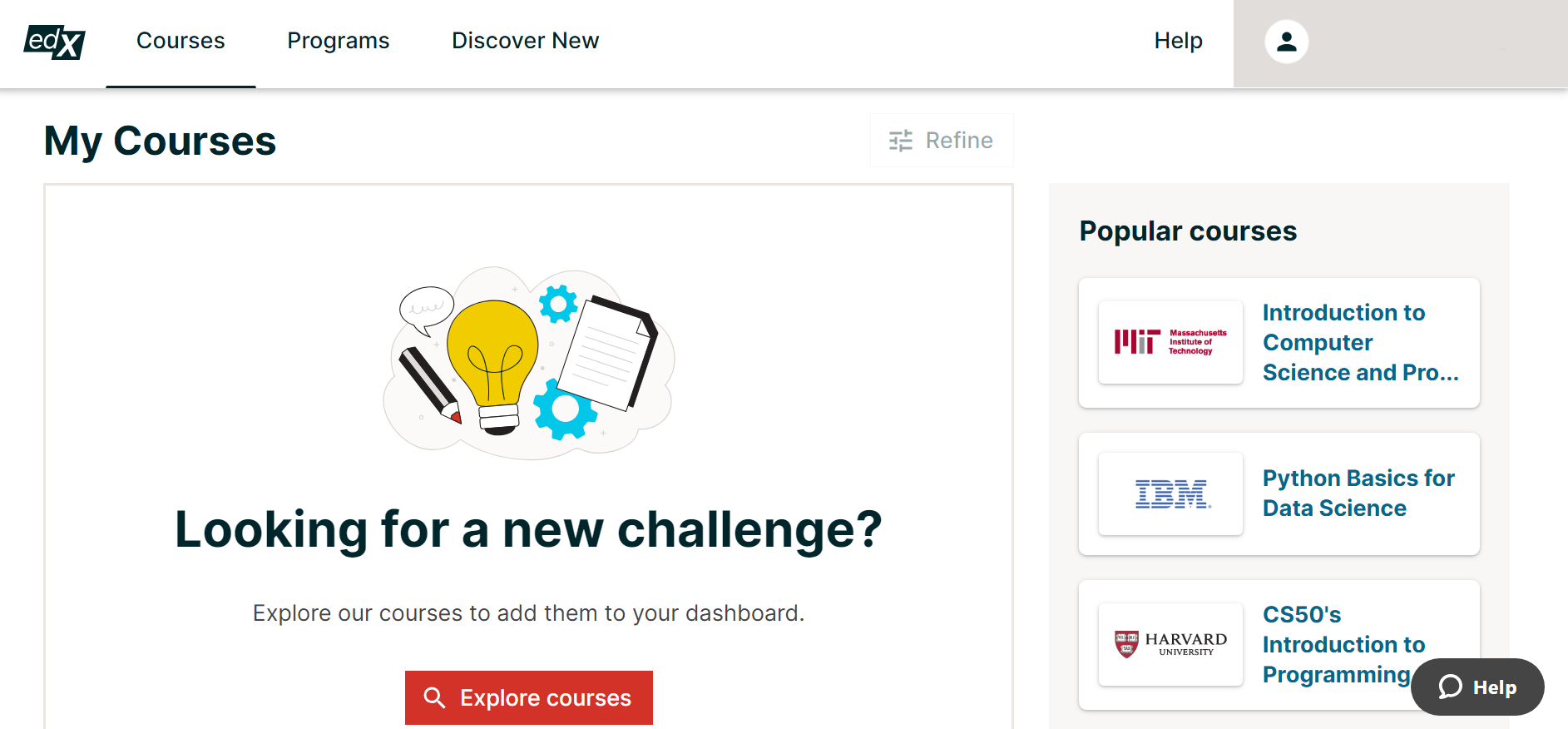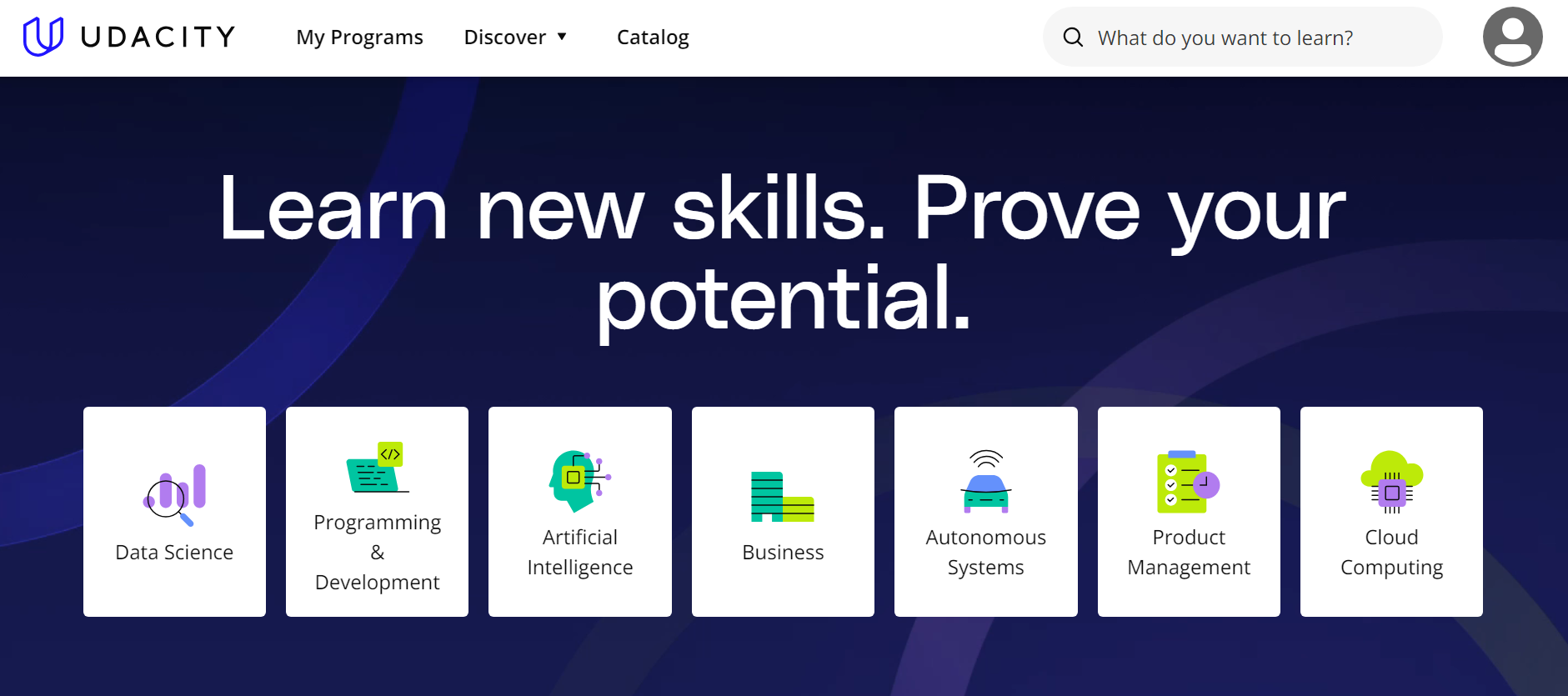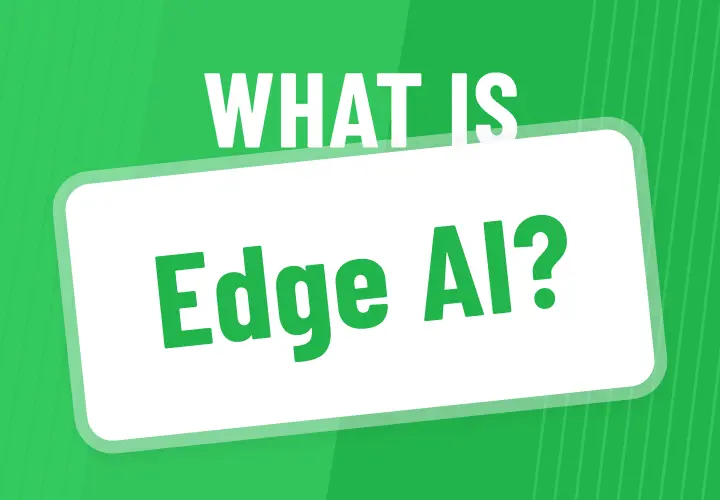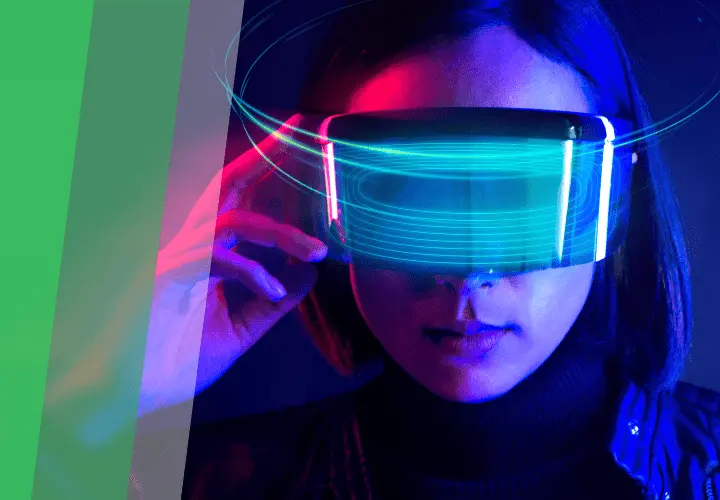What Are eLearning Trends And Predictions for 2024?
Table of contents
- Top eLearning Trends Today
- Mobile learning replaces mobile readiness
- Gamification for better motivation
- Social learning for minimized support and better results
- Microlearning for professional development
- Video-based learning for improved graphical learning process
- eLearning Trends and Predictions for the Upcoming Year
- LXP solutions and mobile technologies
- Experiential learning and MR experiences
- AI and ML for tutoring
- Top eLearning Platforms in 2024: Unveiling Success through Technological Advancements and Investment Prospects
- Coursera
- edX
- Udacity
- Emerline's Expertise in eLearning
- The Bottom Line
Even though the transition from a traditional to eLearning model began two decades ago, the most significant increase in the adoption of technological solutions by the educational sector is happening right now. With eLearning, meeting the demand for flexibility, cost-effectiveness, convenience, and the modernity of educational services can be achieved.
Nevertheless, just having an LMS system in place does not mean reaping all the benefits mentioned. To succeed and have the capacity to create competitive service offerings, businesses have to understand the existing trends in eLearning.
In this post, we’ll provide an overview of the top eLearning trends as well as take a look into the features and current successful market players to see which technologies are going to flourish this year.
Top eLearning Trends Today
Research.com's comprehensive analysis underscores the thriving nature of the global eLearning market, poised to attain an impressive valuation of $336.98 billion by 2026. The compound annual growth rate (CAGR) for the eLearning market spanning from 2018 to 2026 is projected at an impressive 9.1%, indicative of a resilient and consistent expansion. Remarkably, the revenues of the eLearning industry have experienced an extraordinary surge, surpassing 900% since 2000, and are forecasted to triple by 2025.
In response to dynamic market demands, educational institutions are adapting swiftly. The statistics highlight that 72% of institutions researched proactively introduce new online programs to meet the evolving needs of employers. At the same time, 71% respond to student demands by rolling out innovative online courses.
In this dynamic landscape, the educational sector is witnessing significant transformations. The interplay between market forces, technological advancements, and stakeholder demands is shaping the eLearning landscape. Below, we delve into the top 5 shifts that have proven to be the most beneficial to the educational sector, driving its ongoing evolution and adaptability.
Mobile learning replaces mobile readiness
If businesses were previously focused on making their desktop and web eLearning solutions mobile-ready, today, the ability to learn anywhere and anytime is in the first place. For example, in organizations that adopt the remote working model, the quality of the eLearning experience on mobile devices is crucial. The growing preference for mobile access to online information dictates the necessity for businesses to meet user expectations with desired solutions.
With an m-learning solution in place, companies can meet a wide spectrum of training needs. From formatted learning sessions to the application of self-directed, social, and collaborative learning techniques, they can ensure a highly engaging and personalized learning experience for their employees. Given their popularity among users and the trust they instill in businesses, mobile-oriented eLearning solutions are set to remain at the forefront.
Gamification for better motivation
The dropout of students has always been one of the most challenging issues in education. To increase students' motivation, a psychologically-driven approach known as gamification was applied: first to the traditional educational model, and then to the online one.
Gamification in eLearning is achieved by implementing game design elements that capture user attention and increase satisfaction with the learning process. In this way, creating lessons and learning programs that eliminate the routine factor or at least make it a secondary consideration for students becomes possible.
Gamification elements in eLearning allow companies and educational institutions to contribute to higher levels of student motivation, minimize dropouts, and increase productivity by providing entertaining elements. Furthermore, it allows service providers to stand out from their competitors with more satisfying and capturing offerings, contributing to higher retention rates. It's no surprise that in today's digital education era, gamification is seen as one of the most demanded ways to ensure the success of both educators and their audience. And it’s likely the trend will go beyond this year, continuing to gain momentum in the years to come.
Social learning for minimized support and better results
We all know it's better to learn from others' mistakes, and the same can be applied to others' success. Observing how different people handle challenges and interacting with them in real-time makes it easier to identify the most efficient strategies for specific tasks. For this reason, social learning tools are now actively utilized in modern eLearning programs. Tools for content and feedback sharing, along with platforms that foster communities of practice, contribute to effective engagement and collaboration among students.
By emphasizing the social factor in learning, education providers can unleash the power of knowledge exchange. This facilitates both formal and informal modes of learning, promotes active learning, and allows users to direct their own learning pathways, thereby minimizing the need for constant guidance, assistance, and support. And because each hour dedicated to the guidance of students costs education providers money, social learning ensures increased savings.
Microlearning for professional development
According to Deloitte research on the modern learner, an employee has about 24 minutes a week for professional development, so in-depth content makes no sense. And here is where microlearning, one of the leading corporate eLearning trends, comes into play. It allows one to achieve the goal with minimum effort and time simply by dividing huge pieces of content into bite-sized, meaningful parts. Generally, microlearning lessons take two to seven minutes, meaning an average employee can find time for professional development each day. Furthermore, focusing on short lessons is easier, so the learning process becomes more comprehensible.
Video-based learning for improved graphical learning process
With a staggering 33% of the global population utilizing YouTube every month and 51% of all internet users engaging with the video-sharing platform each month, the undeniable prevalence of video content is evident. Despite these compelling statistics, some content providers remain skeptical about its effectiveness. Therefore, the question arises: What makes video content a valuable asset in the realm of learning processes?
First of all, it reduces the skill gap between theory and practical application. This is achieved by allowing a viewer to witness the functional form of the introduced content right at the moment it is delivered. As a result, a user spends less time on a lesson and takes advantage of a more comprehensive approach to learning and understanding the material. Furthermore, the entertaining factor of learning programs featuring quality video materials attracts more users and turns their learning pathways into a satisfying experience.
eLearning Trends and Predictions for the Upcoming Year
So, what is the future of eLearning? First of all, it is worth saying that all of the trends we mentioned have smoothly transitioned into this year, growing in demand and attracting larger audiences. Additionally, this year is set to focus heavily on mobile technologies, Mixed Reality (MR), and AI. Here are some of the hottest eLearning trends to expect.
LXP solutions and mobile technologies
Learning experience platforms, also known as LXP or LEP, are designed to meet the needs of companies in staff training. In the near future, these systems are predicted to rock, because they capture the essence of two more trends: mobile eLearning experience and microlearning.
Featuring a range of integrated technologies, LXPs can deal with such tasks as content aggregation, creation of learning and career pathways, tracking of learning activities and students' progress, etc. In this way, they deliver a learning-rich experience and provide students a high level of engagement, becoming a must-have solution.
Experiential learning and MR experiences
To address the issue of students being distracted from learning activities, the concept of experiential learning was introduced. When applied to modern eLearning practices, this concept often involves embracing immersive technologies like Mixed Reality (MR)—a blend of Augmented Reality (AR) and Virtual Reality (VR)—that allow users to learn from hands-on experience in a close-to-reality environment. Placed in real-world situations generated by a machine, a student can acquire and master skills, as well as learn to make the right decisions in the safety of a controlled environment. In this way, such solutions allow a student to seamlessly bridge the skill gap between the processes of learning and the application of knowledge.
Featuring intriguing images and graphics along with real interactions, MR in education allows for delivering practical instructional strategies that cut distractions.
Experiential learning with immersive technologies contributes to efficient distance learning. This provides an excellent opportunity for companies where remote work has become the new norm, ensuring confidence in their employees' professional growth.
AI and ML for tutoring
In 2024, a surge in AI tutors and platforms incorporating machine learning (ML) algorithms to facilitate optimal tutor-student pairings is anticipated, marking a significant technological evolution in education. This advancement promises to revolutionize the educational landscape by ushering in personalized learning experiences. Among the emerging tools, there is notable recognition among students for the versatile utility of sophisticated chatbots driven by language models. These chatbots effectively handle tasks ranging from providing relevant introductory information to new students and addressing common queries to actively supporting and guiding students throughout their academic journey. At Emerline, we offer a full range of AI & ML development services to seamlessly integrate your EdTech project with every cutting-edge AI feature it might need. From sophisticated chatbot assistants to custom analytical solutions and beyond, we'll ensure your solution maximizes student engagement, delivering the best learning outcomes.
Language-driven tools, such as ChatGPT, extend beyond basic interactions; they recommend academic articles and supplementary reading materials tailored to individual coursework. Furthermore, they serve as valuable resources for generating various types of texts that students may require. While not infallible in producing trusted, proven content, these technologies expedite the creation of text materials and act as valuable sources for generating new ideas.
As machine learning progresses, its potential to deepen the study experience becomes apparent. ML algorithms are set to enhance the learning experience by effectively matching individual students with the most suitable tutors. By formulating targeted questions and correlating information from tutors, ML algorithms aim to inject a personalized element into the learning process. This tailored approach makes a substantial contribution to academic success. The integration of these cutting-edge technologies is anticipated to shape a more dynamic and individualized approach to education in the coming years.
Top eLearning Platforms in 2024: Unveiling Success through Technological Advancements and Investment Prospects
Understanding the driving factors behind successful eLearning platforms is crucial for entrepreneurs seeking to thrive in the industry. Examining the key players can shed light on market demands and illuminate strategies for business success, especially with the integration of cutting-edge technologies. So, let's look at some key players in the current eLearning market to create a picture of what drives modern eLearning businesses to success.
Coursera

Coursera, a pioneer in online learning with 56,8 million monthly visits, excels through its global collaborations with universities and organizations. It offers a wide range of educational content, from Massive Open Online Courses (MOOCs) to corporate training programs, as well as specializations and degrees. The platform's popularity is underpinned by a vast course catalog, esteemed partner institutions, and a commitment to providing learners with adaptable and accessible education.
Technological features driving success
- AI-powered personalization: Coursera's utilization of artificial intelligence delivers personalized learning paths, enhancing user engagement and outcomes.
- Interactive assessments with ML: The platform's adaptive assessments leverage machine learning algorithms, tailoring evaluations based on individual performance, fostering a customized and efficient learning experience.
- MR integration: Some courses incorporate Mixed Reality), immersing learners in interactive and lifelike educational experiences.
edX

Founded by Harvard and MIT, edX is an open-source online learning platform with 11.7 million monthly visits. The platform is renowned for its collaboration with universities, colleges, and industry partners globally. Learners can access individual courses, pursue MicroMasters or Professional Certificates, and work towards full degrees while engaging with cutting-edge educational content.
Technological features driving success
- Open platform: EdX's commitment to an open-source philosophy fosters flexibility and innovation, allowing educators to experiment with emerging technologies and enhance the platform continually.
- Blockchain for credential verification: Exploring blockchain technology ensures secure and authentic credential verification, bolstering the integrity of certificates and micro-credentials.
- Mobile-first approach: A mobile-optimized design ensures seamless accessibility, allowing learners to engage with content on various mobile devices, reflecting edX's commitment to adaptability.
Udacity

Udacity collaborates with industry leaders, constantly widening their offerings, to develop a curriculum with a strong emphasis on tech-related courses and nanodegree programs. Such an approach utilizes project-based learning to empower learners with practical skills. The platform attracts around 2.1 million visitors monthly, and its popularity is anchored in its industry relevance, hands-on approach, and integration of real-world projects that prepare learners for specific tech roles.
Technological features driving success
- Project-based learning: Udacity's emphasis on project-based learning ensures real-world applications, allowing learners to develop practical skills applicable in professional settings.
- AI-driven industry simulations: Industry-relevant simulations powered by AI provide learners with realistic environments, enhancing their understanding of complex concepts.
- Mobile optimization: Udacity's commitment to a mobile-optimized platform ensures on-the-go accessibility, catering to the modern learner's need for flexibility and convenience.
Emerline's Expertise in eLearning
Being a successful software company in the eLearning market for more than 12 years, Emerline has always been at the forefront of innovations. We ensure that our solutions utilize the power of recent developments in the industry and shape the future of educational technology through our in-house Research and Development department. Our full-cycle eLearning software development services cover the following:
- Custom EdTech solutions development, including LMS platforms, educational apps, and e-learning portals.
- Innovative technology applications incorporating the latest virtual event management systems and other cutting-edge technologies.
- Learning Experience Platforms for personalized learning experiences.
- Web and Mobile eLearning Applications.
In addition, our expertise extends to implementing and customizing renowned LMS platforms like SAP SuccessFactors Learning and Moodle. We also specialize in integrating essential systems, such as payment gateways and external content providers. This holistic approach, combined with our commitment to a human-centric design philosophy, ensures the delivery of engaging and effective eLearning environments. Our comprehensive DevOps and services further guarantee seamless experiences tailored to meet the diverse needs of learners worldwide.
Minimal Value Product (MVP) methodology enables us to launch your product within 2 to 5 months, offering rapid value delivery and critical insights into your eLearning project's potential. This approach streamlines concept testing and refinement, reinforcing our commitment as your dedicated technology partner. This strategy secures a competitive edge and fosters continuous advancement for your project by swiftly adapting to market changes.
The Bottom Line
Even though trends in eLearning tend to come and go, those highlighted in this article are not going to fade in the coming years. And because the future of eLearning is all about growth, expansion, and the adoption of new innovative technologies, forward-thinking companies and organizations need to reevaluate their current training programs and systems, keeping in mind the existing and upcoming technological trends.
Updated on Mar 14, 2024





